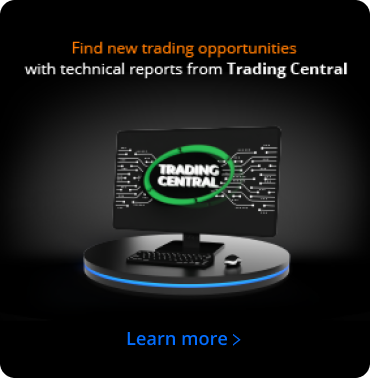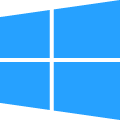Futures Trading
Trade or hedge risk without swap fees
Trading is risky
INDICES FROM
US, UK, EU & ASIA
TRADE FROM
$0 COMMISSION
UP TO
1: 100 LEVERAGE
4 FUTURES
INDICES FROM
US, UK, EU & ASIA
TRADE FROM
$0 COMMISSION
UP TO
1: 100 LEVERAGE
4 FUTURES
Trade futures markets
Symbol
Bid
Ask
Spread

*The prices on this page are indicative. Prices for instruments with lower liquidity such as but not limited to exotic currency pairs, stocks and indices are not refreshed as often as commonly traded instruments. Please check inside your MT4/MT5 platform for latest live prices
What are Futures
Futures are derivative contracts that obligate the parties involved to buy or sell an asset at a predetermined future date and a set price. The price is derived from the underlying asset and the nature of these contracts makes them useful for trading and hedging. Futures contracts come with an expiry date and there are no overnight swap fees involved, so they are very cost effective for long term trading.

No overnight swaps

Great for hedging

Trade with Leverage
How futures trading works
Futures trading works similarly to CFD trading, but each futures contract has an expiry date. You can close your position at any time or you can let the contract close at expiry. If you would like to maintain your position after the expiry date, you can open a new position in a futures contract with a later expiry date. Futures contracts are updated frequently with new expiry dates and the expiry date for each futures contract is indicated by the symbols suffix. For example, DJ.H24 is a Dow Jones futures contract that expires in March 2024. SP.N24 is an S&P 500 futures contract that expires in July 2024.
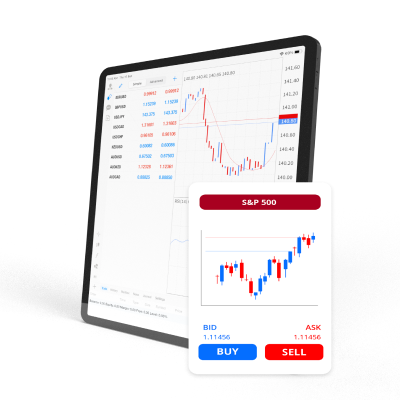
Bid and ask prices
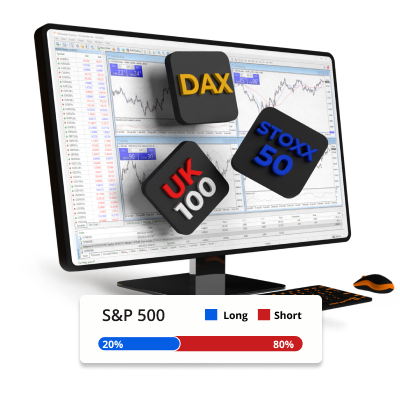
Go long or short
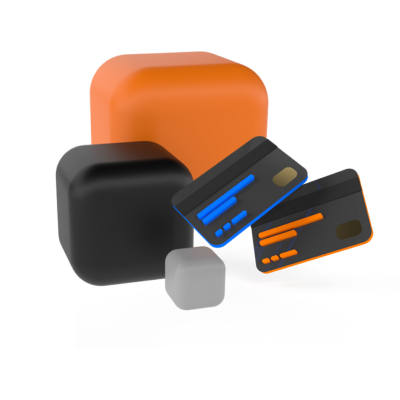
Futures are traded in lots
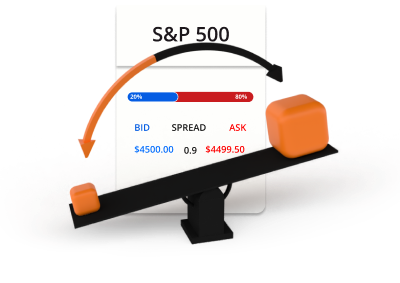
Futures trading involves leverage and margin
Futures trading example
You decide to buy 0.1 lots of S&P500 futures at 4500 using 100:1 leverage.

5 futures contracts x 4500 = USD 22,250
USD 22,250
USD 22,250 / 100 = USD 225
Now you have opened a long position in the S&P500 worth USD 22,250. Since futures are traded using leverage, only $225 was used as margin from your trading account. After some time, the price of the S&P500 moves and you decide to sell.
Scenario 1

The S&P500 moves up from 4500 to 4600 and you decide to sell.
This is how the profit or loss on the trade would be calculated.
P/L = (Current price - Initial price) x Position value) / Current price
P/L = ((4600 - 4500) × 22,250) / 4,600
P/L = (100 × 22,250) / 4,600
P/L= 483.70
Scenario 2

The S&P500 moves down from 4500 to 4400 and you decide to sell.
This is how the profit or loss on the trade would be calculated.
P/L = (Current price - Initial price) x Position value) / Current price
P/L = ((4400 - 4500) × 22,250) / 4,400
P/L = (-100 × 22,250) / 4,600
P/L = -483.70
Why TIOmarkets
This is why people like you choose TIOmarkets

Spreads from 0.0 pips
Trade with raw variable spreads on our Raw account

Commission-free trading
Trade from $0 per lot on our VIP Black or Standard trading accounts

MT4 & MT5
Advanced trading platforms for desktop, web and mobile

Fast order execution
Efficient and reliable order processing in milliseconds

Unlimited leverage
Trade with up to unlimited leverage on our Standard account

30% Loyalty bonus
Get a bonus on every deposit to our Standard account
Trade on the MT4 or MT5 trading platforms
From your desktop, internet browser or mobile
Start trading in minutes
This is how it works

STEP 1
Register
Complete your profile and create your account, it only takes a few minutes

STEP 2
Verify
Upload your proof of identity and address, this is required before withdrawal

STEP 3
Fund
Choose from convenient local and international methods and deposit instantly

STEP 4
Trade
Download the platform, transfer funds to your account, log in and start trading
Trading is risky
